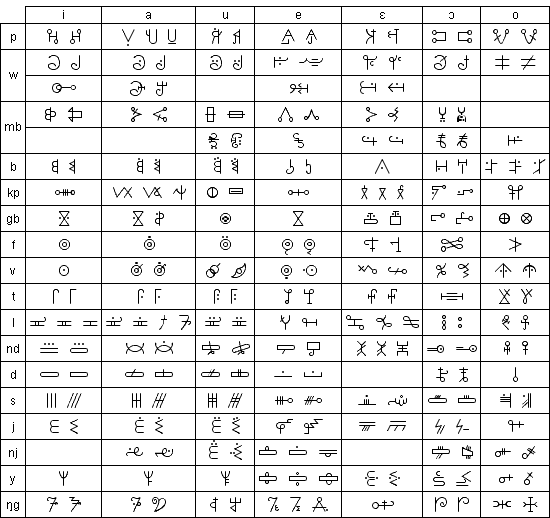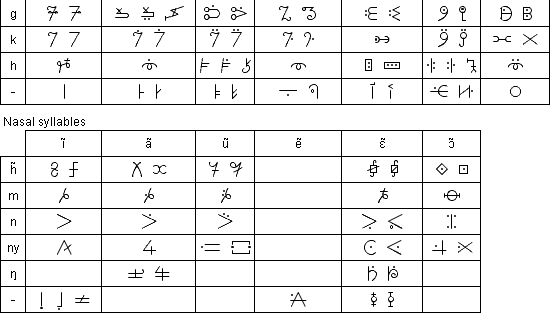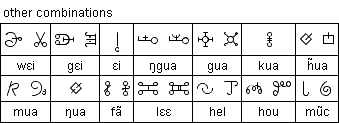Mende syllabary 
The Mende syllabary was invented in 1921 by Kisimi Kamara
(ca. 1890-1962) of Sierra Leone. Seeing how the British managed
to take over his country, Kisimi concluded that their power was
partly a result of their literacy. He decided to give his own
people that ability. Kisimi claimed he was inspired in a dream
to create the Mende syllabary, which he called Ki-ka-ku.
During the 1920s and 1930s he run a school in Potoru to teach
Ki-ka-ku. The syllabary became a popular method of
keeping records and writing letters.
During the 1940s the British set up the Protectorate Literacy Bureau
in Bo with the aim of teaching the Mende people to read and write
with a version of the Latin alphabet. As a result, usage of Kisimi’s
syllabary gradually diminished and it was eventually forgotten.
Mende is a Niger-Congo language spoken by about 1.26 million people
in Liberia and Sierra Leone.
Notable features
- Consists of 195 symbols.
- Some syllables here several versions.
- Written from right to left in horizontal lines.
Mende syllabary



The Mende font used on this page was created by Jason Glavy
Sample text in Mende in the Latin alphabet
Numuvuisia Kpɛlɛɛ ta ti le tɛ yɛ nduwɔ ya
hu, tao ti nuvuu yei kɛɛ ti lɔnyi maa hɛwungɔ.
Kiiya kɛɛ hindaluahu gɔɔla a yɛlɔ ti hun.
Fale mahoungɔ ti ti nyɔnyɔhu hoi kia ndeegaa.
Links
Information about Kisimi Kamara
http://www.sierra-leone.org/heroes7.html
